Takomborerwa Hove - Waste management in developing countries
Takomborerwa Hove - Waste management in developing countries
Takomborerwa Hove - Waste management in developing countries
Create successful ePaper yourself
Turn your PDF publications into a flip-book with our unique Google optimized e-Paper software.
EWB-UK National Research & Education Conference 2011‘Our Global Future’4 th March 2011Figure 30: Medical waste at Blantyre's sole dump siteFigure 31: Image of waste at the city dumpA report published by the Blantyre City Assembly states that medical drugs count as special waste and should either becrashed or burned before f<strong>in</strong>al disposal (BCA, 2010). The dump site has been <strong>in</strong> use s<strong>in</strong>ce 1993. It receives roughly 3000tonnes of waste every month. To create room waste will be piled up <strong>in</strong>to heaps then eventually spread level then covered<strong>in</strong> earth before be<strong>in</strong>g compacted at the site. Cover<strong>in</strong>g the waste up helps to create anaerobic conditions mean<strong>in</strong>g biogaswill cont<strong>in</strong>ually be leak<strong>in</strong>g <strong>in</strong>to the air. As no impervious soil layer is placed on the ground before compaction leachatefrom the waste is more than likely to percolate <strong>in</strong>to the ground and eventually contam<strong>in</strong>ate groundwater.Scavengers were spotted at the site. The City Assembly estimates roughly 150 scavengers a majority of them be<strong>in</strong>gchildren visit<strong>in</strong>g the site on a daily basis (BCA, 2010). There is noth<strong>in</strong>g at the site to deter people from enter<strong>in</strong>g. theimage figure 6 shows a corn field that is located adjacent to the site. Most scavengers at the site are look<strong>in</strong>g for plasticbags as there is a small bus<strong>in</strong>ess located nearby that is <strong>in</strong>volved <strong>in</strong> recycl<strong>in</strong>g them. At the site very strong foul odourscould be detected from the decompos<strong>in</strong>g organic matter. Prolonged exposure to the conditions at the site may havedetrimental health effects for those that frequently attend the site. Both anaerobic and aerobic conditions are likely toexist at the site for years to come. The dump site also creates ideal conditions for vectors such as mosquitoes to thrive.Malaria is a prevalent disease with<strong>in</strong> the city. The site is bordered by a stream and this means dur<strong>in</strong>g the ra<strong>in</strong>y seasoncontam<strong>in</strong>ants <strong>in</strong> the waste may be transported <strong>in</strong>to this watercourse. Ra<strong>in</strong> may also carry from the waste through the soil<strong>in</strong> to the groundwater and streams.Poor solid waste disposal practices <strong>in</strong> Blantyre comb<strong>in</strong>ed with many other factors have contributed to eutrophication ofthe city’s waterways. This has very negative consequences for the residents that live downstream of some the city’s ma<strong>in</strong>rivers.CollectionCollection of waste <strong>in</strong> the city is carried out six days a week <strong>in</strong> planned areas. In the town’s busier markets wastecollection is done everyday.The efficiency of the transportation of waste is a problem for the Blantyre City Assembly (BCA). The assembly po<strong>in</strong>ts tothe level of education <strong>in</strong> the sector as a limit<strong>in</strong>g factor. The BCA highlights a shortage of tra<strong>in</strong>ed personnel <strong>in</strong> the sectormak<strong>in</strong>g logistical plann<strong>in</strong>g a problem. The effectiveness of the BCA’s service is affected by a low supply of fuel as eachvehicle is given a limited supply.In 2010 the assembly owned 100 skips of which 58 were be<strong>in</strong>g hired out to private companies while the rest were placed<strong>in</strong> markets and unplanned areas (BCA, 2010). Companies are charged MK 7,000 (USD 50) for us<strong>in</strong>g the skips with thesame amount be<strong>in</strong>g charged if assembly vehicles are to be used to collect them when full. This leaves 42 skips to servethe city’s markets, some of its traditional hous<strong>in</strong>g areas (THAs) and the <strong>in</strong>formal sector (BCA, 2010). Consider<strong>in</strong>g thatonly 125 tonnes of waste is collected and a further 475 tonnes goes uncollected highlights a major <strong>in</strong> <strong>in</strong>frastructureavailable to deal with the city’s waste.Table 2 below shows a breakdown of the contents that make up the waste produced <strong>in</strong> Blantyre. Consider<strong>in</strong>g thatBlantyre’s low <strong>in</strong>come population is represented by those that live <strong>in</strong> high density formal hous<strong>in</strong>g areas, traditionalhous<strong>in</strong>g areas and <strong>in</strong>formal settlements it is easy to conclude that this group of people produces a majority of thehousehold waste <strong>in</strong> the city. However this group of people are less likely to receive waste collection and the putresciblewaste they produce is more than likely to be produc<strong>in</strong>g air pollution where it is improperly disposed of.Panel Presentation: IndustryAuthor: <strong>Takomborerwa</strong> <strong>Hove</strong>Institution: University of Strathclyde131


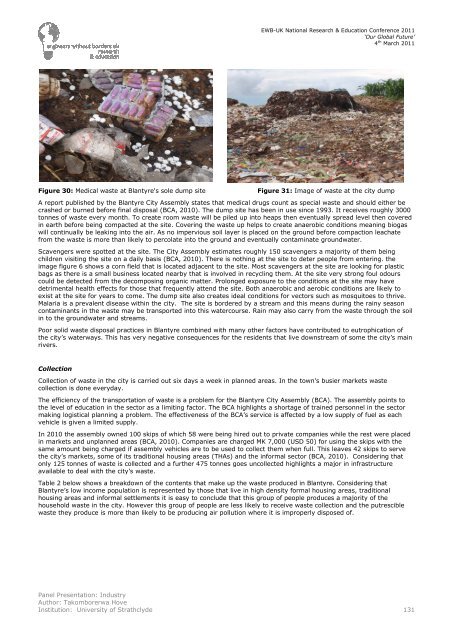
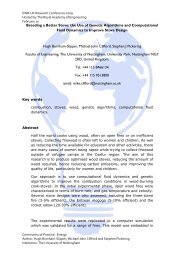

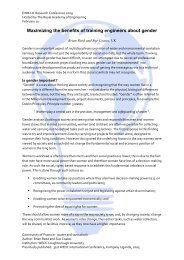
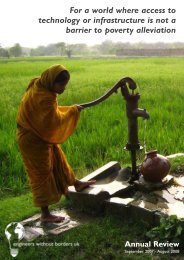
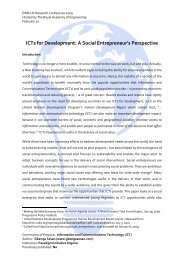
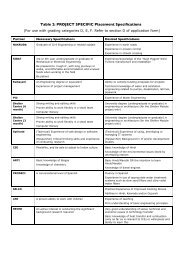

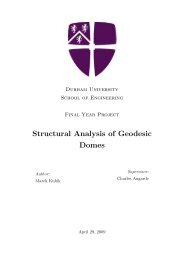
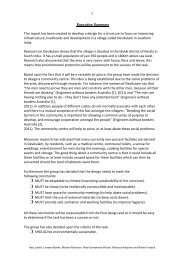


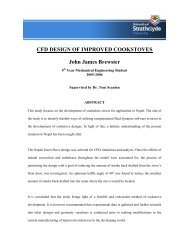
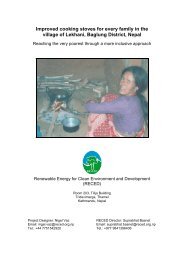
![Ethical Fundraising Guidance[1].pdf - Engineers Without Borders UK](https://img.yumpu.com/36288951/1/184x260/ethical-fundraising-guidance1pdf-engineers-without-borders-uk.jpg?quality=85)